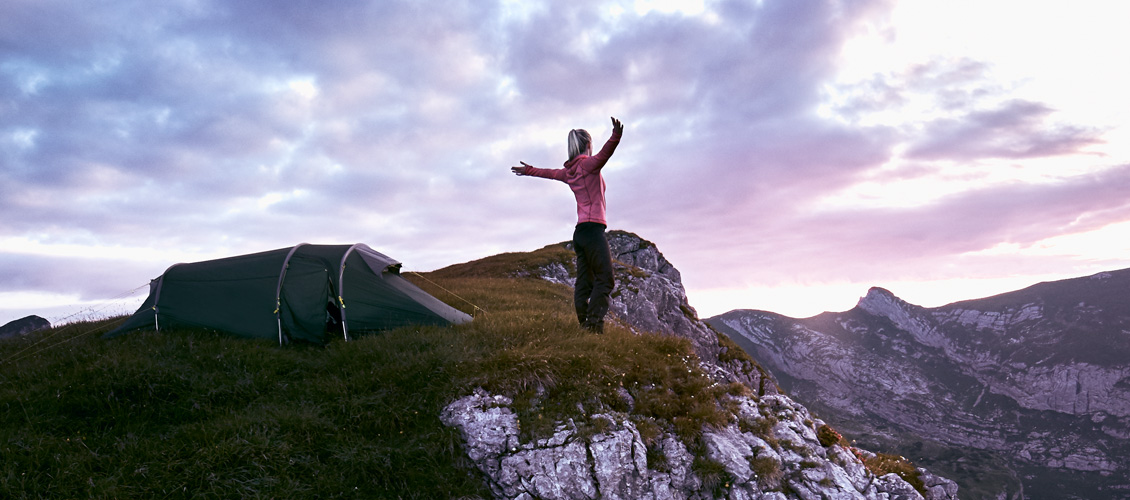
A successful tour also depends on the selection of the right tent. The tent experts at Tatonka know this and have developed the perfect tent for each challenge – from small and light to big and comfortable.
The days when a tent consisted simply of a floor, roof and a few tent pegs are long gone. Tatonka tents are highly functional high-tech products, perfectly designed in construction and materials for their particular purposes. The selection is large, making the right decision isn’t. If you have any questions, our consultants in your specialist outdoor shop will be happy to help you at any time so that you will always be sure to have the right roof over your head.
In order to utilise our tents to the full and enjoy them for a long time, it is essential that the instructions and care information be observed – as is always the case with any technical “appliance”. This site contains the main information on using and handling our tents.
Before you buy a tent, give some thought to when and how you want to use it. Consider the following points to help you find the optimum tent:
Number of people:
Will you be using it on your own, with your family or with a group?
Weight/packed size:
Do you need a particularly light tent that packs down small because you will be carrying it yourself on long treks, or perhaps because you’re planning to take it on a cycle or canoe trip?
Easy to use:
Will you be putting it up and taking it down in a different place every day?
Lying comfort / storage:
Are you looking for a tent that is relatively comfortable, or will you be happy in a small space? For instance, will you want to keep your bikes in the vestibule?
Tatonka offers a total of three tent lines in various sizes. The tent lines differ in materials and features:
Allround tent
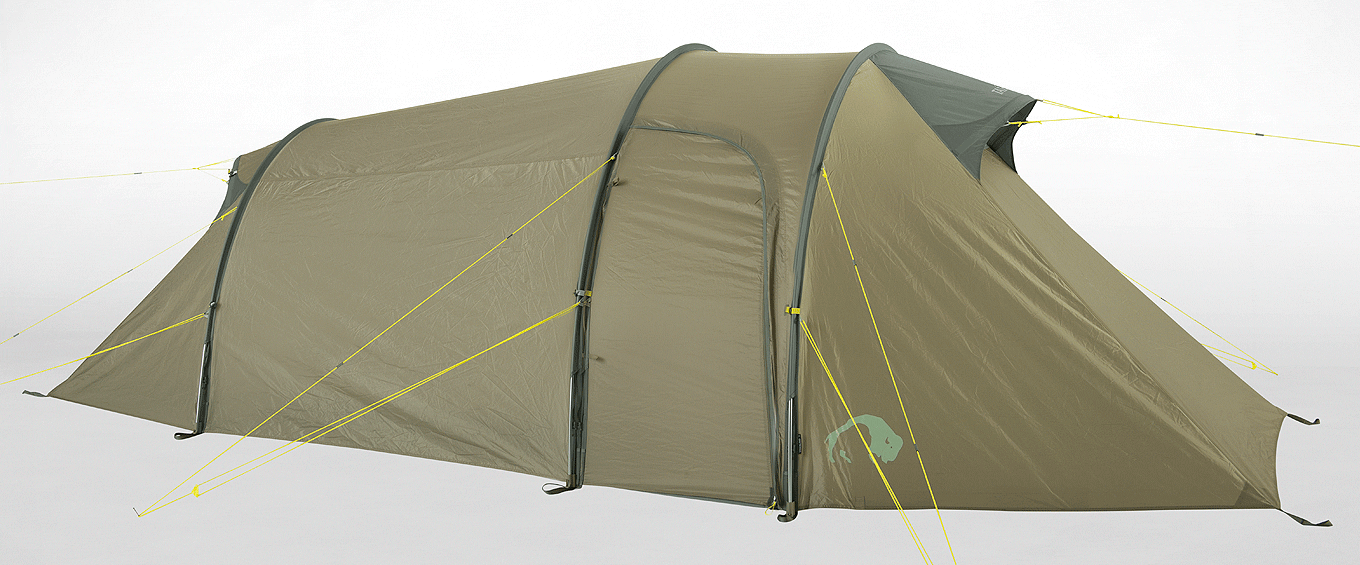
Tatonka Allround tents are light and very strong, and are perfect for camping in normal weather conditions. There’s a tremendous selection, ranging from one-person tents to family tents you can stand up in. The smaller versions will even fit in a trekking rucksack..
Expert tent
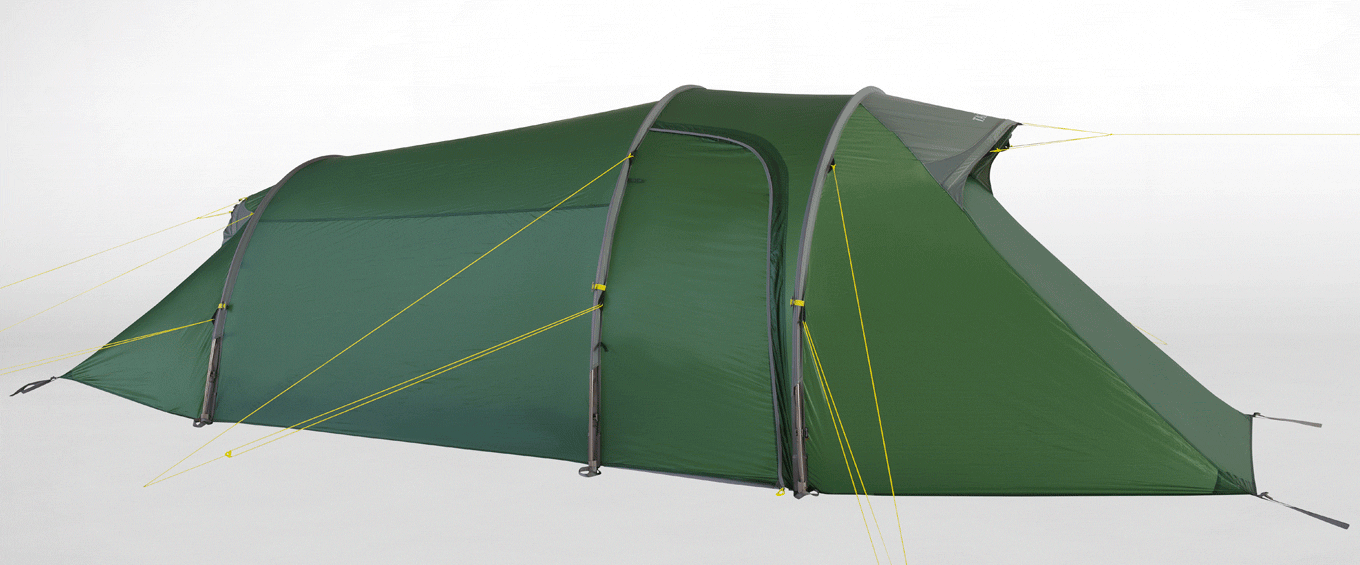
The Expert tents are particularly tear-resistant, extremely durable and very light. We recommend them to people who camp a lot, including under extreme weather conditions, and/or who want a particularly light tent.
Got everything you need?
Choose the right spot for your tent
Drying
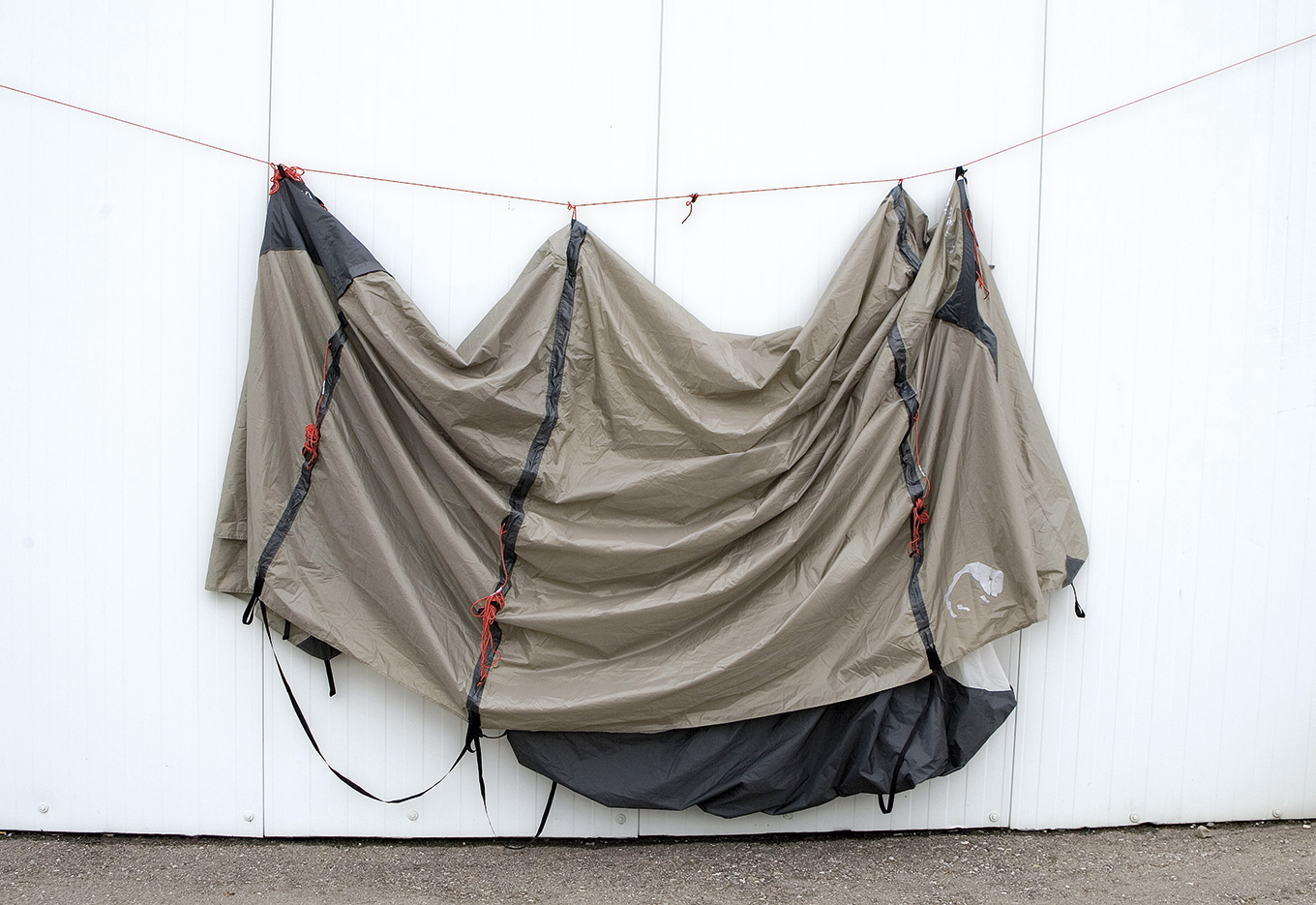
Cleaning
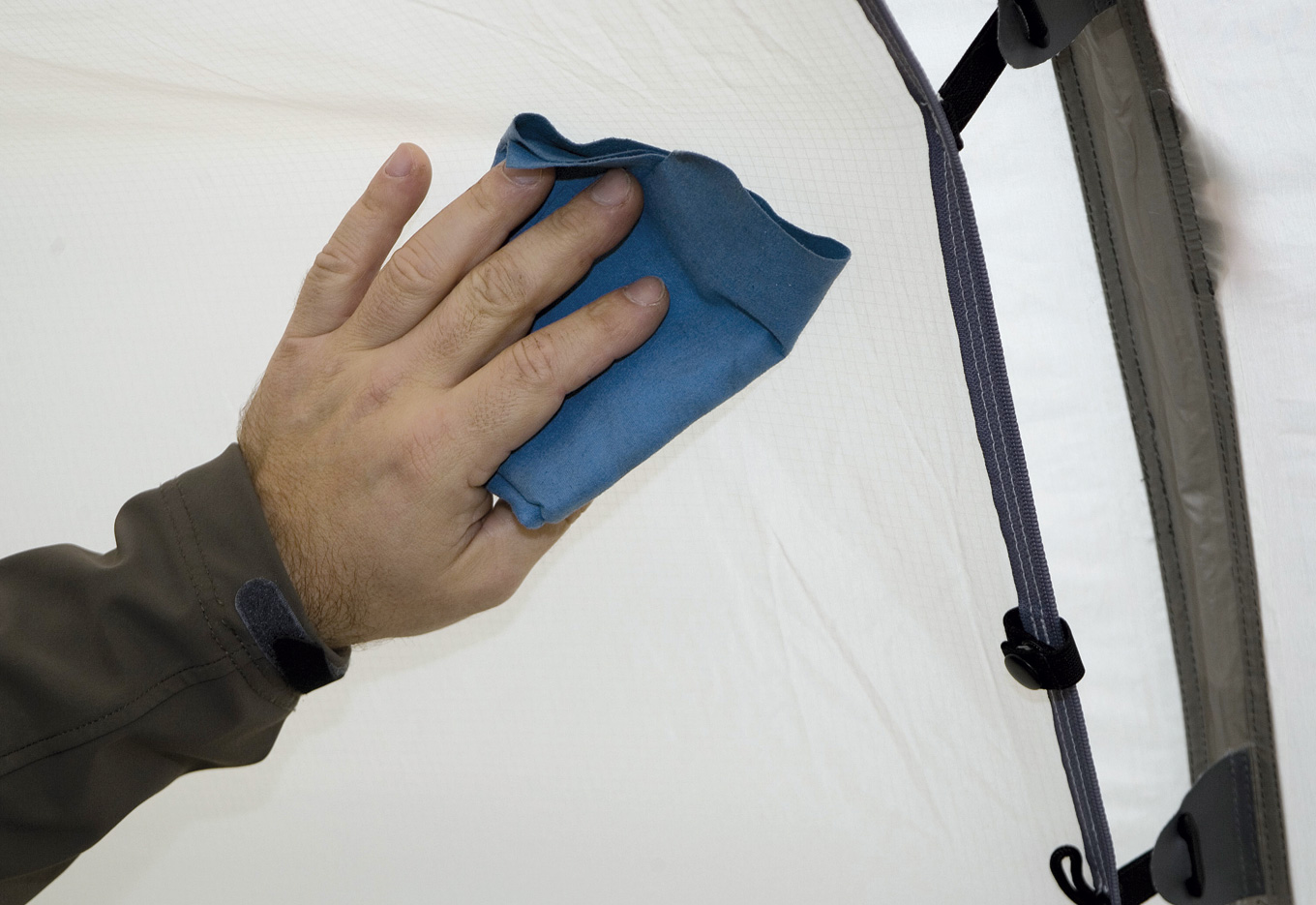
Guy ropes
Guy ropes will secure your tent against wind and weather. The advantage with a Tatonka tent: they have a roll-up device for guy ropes that makes it much easier to set them up and prevents knots. For greater visibility in the dark, the ropes on the Allround series are identified by reflective sleeves, while on the Expert lines the whole rope is reflective.
Vestibule
A vestibule is a storage area between the inner tent and entrance where you can keep your luggage. It is a clean, dry place for anything that you don’t want to keep in the inner tent.
Entrances
Inner tent entrances are wide cut on Tatonka tents and can be easily operated with one hand. In the Expert series, the mosquito windows can be closed separately. The completely opened entrance can be stowed away in the side pocket or secured rolled up.
Frames
The frames must be of the highest possible quality. Tatonka uses YUNAN tent frames because this manufacturer cares about sustainability as much as quality. YUNAN provides frames in two different aluminium alloys; the choice is determined by the tent category. Both are unbreakable and hollow on the inside, and they are connected by rubber bands so they fit together easily.
Tent pegs
Our tents come with a sufficient quantity of standard tent pegs. This will cover at least 90 percent of all requirements. If necessary, you can ask your dealer about special tent pegs, for instance for sandy, hard, stony or snowcovered ground.
Vents
Vents are covered openings in the outer membrane of the tent that allow the air to circulate. They can be guyed separately, and with Tatonka are made to be waterproof. Thanks to a stiff fabric band, Tatonka vents can still be positioned easily even after long use. All Tatonka tents have plenty of vents for the optimum air circulation. The vents on the Alaska and Expert series tents can even be locked on the inside.
Mosquito windows
The entrances to the Tatonka inner tents have mosquito windows that close separately, and can be kept in a pocket on the side. They are used to provide additional ventilation.
Care
Please make sure your tent is absolutely dry when you store it after a trip to prevent damage to the coating. Tents should only ever be washed by hand; never in the washing machine. Shady pitches and groundsheets will protect the material on your trips.
Bags
Side bags at head height (when lying down) are perfect for storing items such as reading glasses. Lots of models also have pockets at the foot end that are easy to reach when upright. The Polar and Alaska tents also have a removable vestibule bag plus a roof bag for small items such as a book, insect spray and so on.
Ground sheets
Tent ground sheets protect the tent floor from damage by stones, branches etc. and also ward off wetness and cold for longer. Apsidal sheets make the apses a clean and dry place to store even in bad weather and damp ground.
UV rays
All tent materials, especially the outer fabric, undergo an ageing process, and their resistance to tearing declines over the course of time. The main reason for this is UV radiation. Tents with a silicone coating are far more resistant than those with a PU coating. In order to reduce the risk, tents should be erected in the shade if at all possible.
Condensation
Depending on the size of the inner tent, the number of occupants, the weather and the ground, a greater or lesser amount of condensation will occur on the inside of the outer tent. This doesn’t mean your tent is leaking! Nor will touching the outer tent make it leak. You can often use simple means to reduce the amount of condensation.
Waterproofness
No tent is 100 percent waterproof because water can penetrate joints, seams and zips, but it can also be diverted to outside – essential when it comes to condensation.
Water column
The water column indicates how high the water pressure can be before the fabric starts to allow moisture through. According to the DIN standard, a figure of 1.500 mm is considered waterproof. Loads and wear are just some of the things that a ground sheet has to be able to cope with. Although the water column is lower on a silicone-coated outer tent than with a pure PU coating, it is more than compensated for by the much higher and longer-lasting beading effect. You will find the full details for each model in the overview.